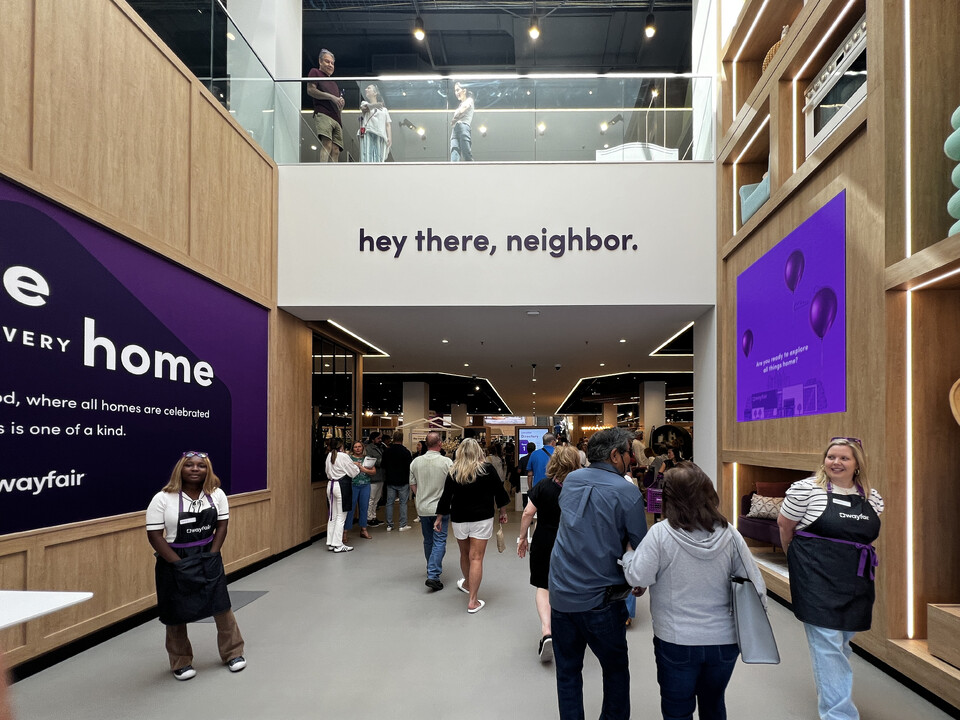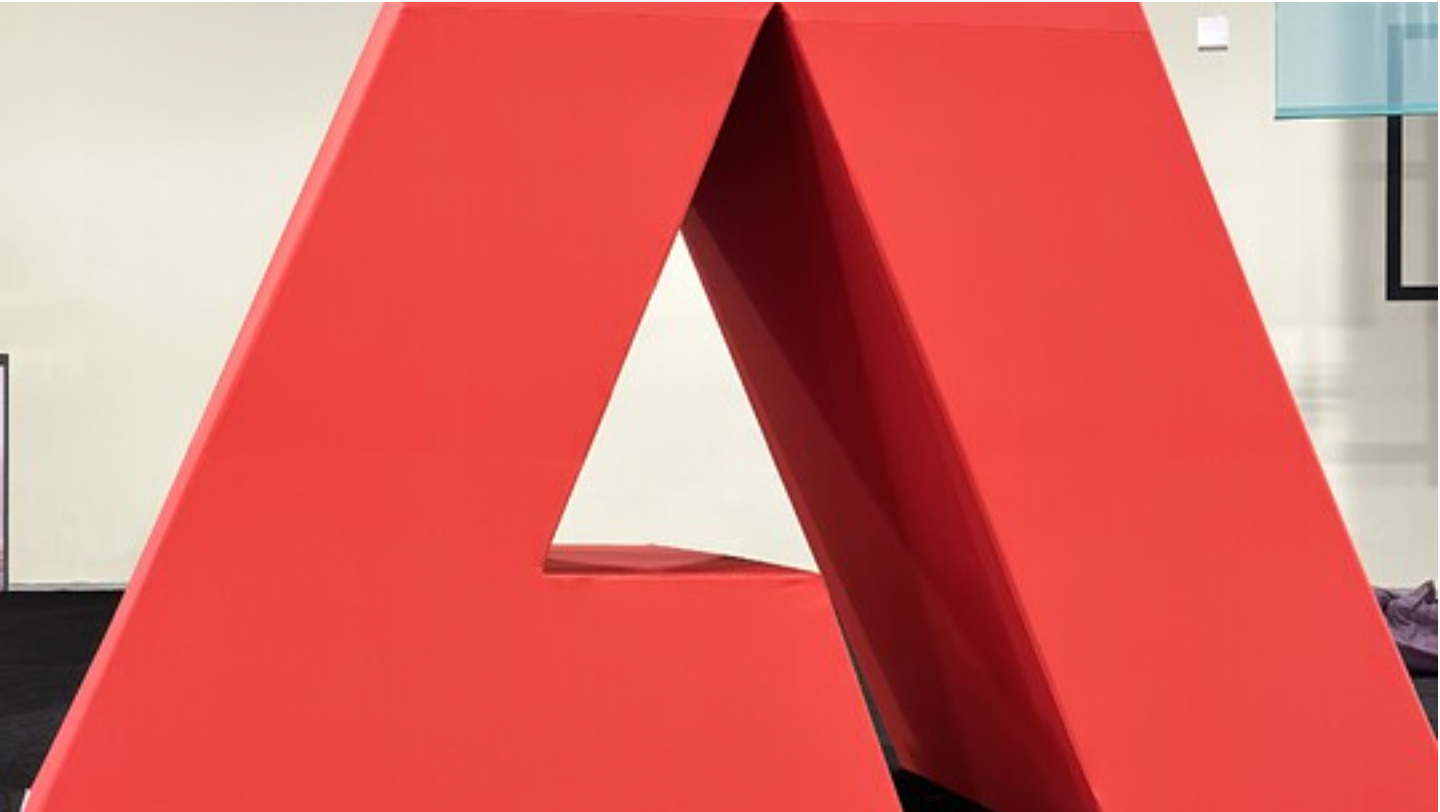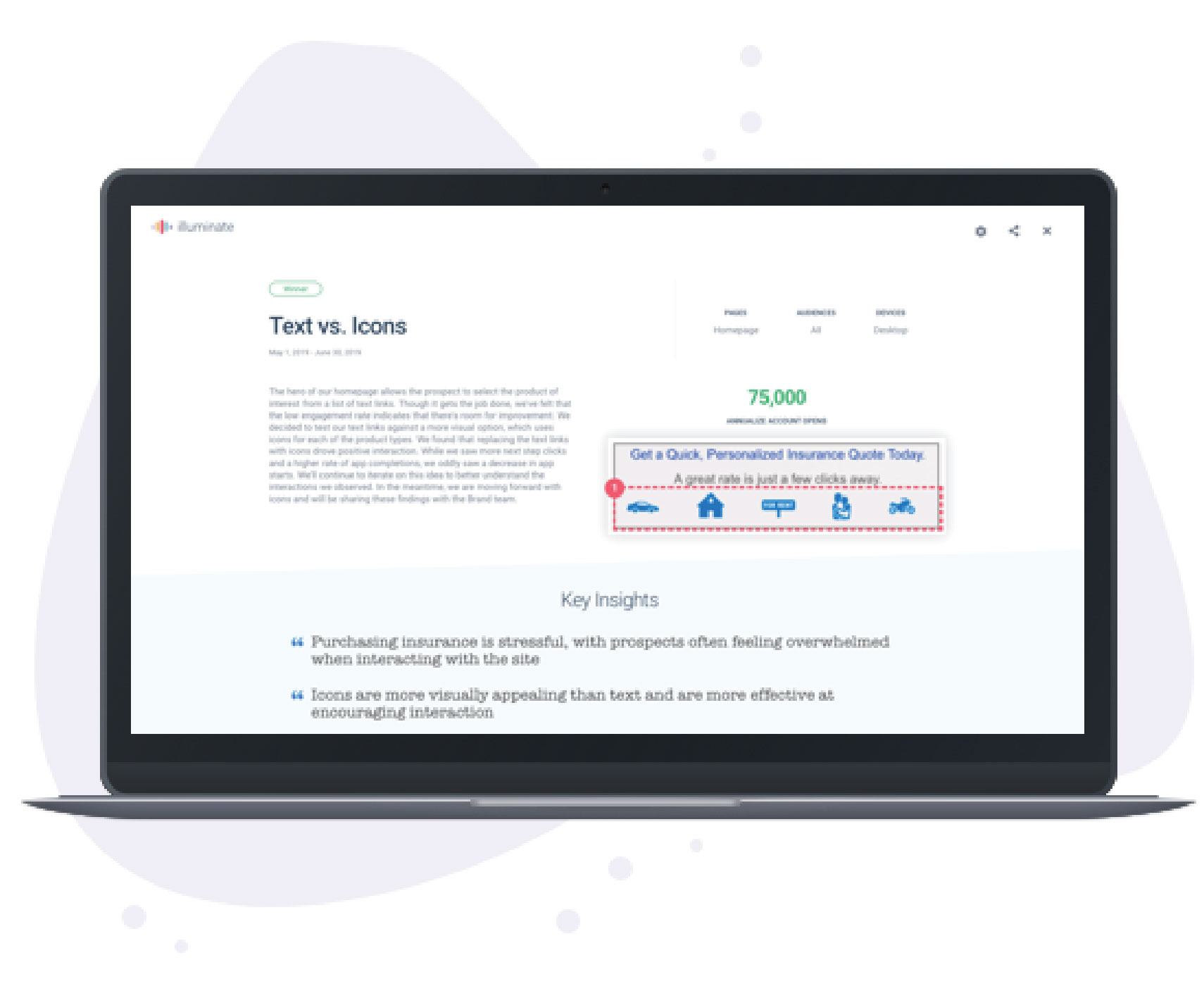Brooks Bell’s CEO, Greg Ng, shares his thoughts after attending the grand opening of Wayfair’s first large-format retail store.
I had the privilege of attending this morning‘s grand opening of Wayfair’s first brick and mortar store location in Wilmette, Illinois. Typically, my team gets to do the in-store research studies, but I was already in the Chicago area this week, so I journeyed out to the suburbs to see it for myself.
I was very excited to experience this new in-store shopping experience from Wayfair. Over the last few years, I have purchased from Wayfair in a number of ways: using the Wayfair app, on my computer at Wayfair.com, and I even had the fortune of visiting the small Wayfair store in early 2020 in the Natick Mall in Massachusetts before it was shut down later that year.
Many people leading up to this opening have tried to compare this Wayfair store with an IKEA. Yes, there is a place to eat and there are showrooms styled to inspire ways to furnish full rooms in your house but I don’t believe the comparison to IKEA is accurate or fair.
I was particularly interested to see how a digital retailer like Wayfair approaches a physical retail space in 2024. My initial reaction is that Wayfair spent quite a bit of time strategizing the benefits that a customer could have in a physical space as well as ensuring the convenience of browsing, comparing, and purchasing in digital spaces was not simply enabled but enhanced. This is a great opportunity to full realize the benefits of omnichannel.
There are two main features of this physical Wayfair store that I am particularly excited about:
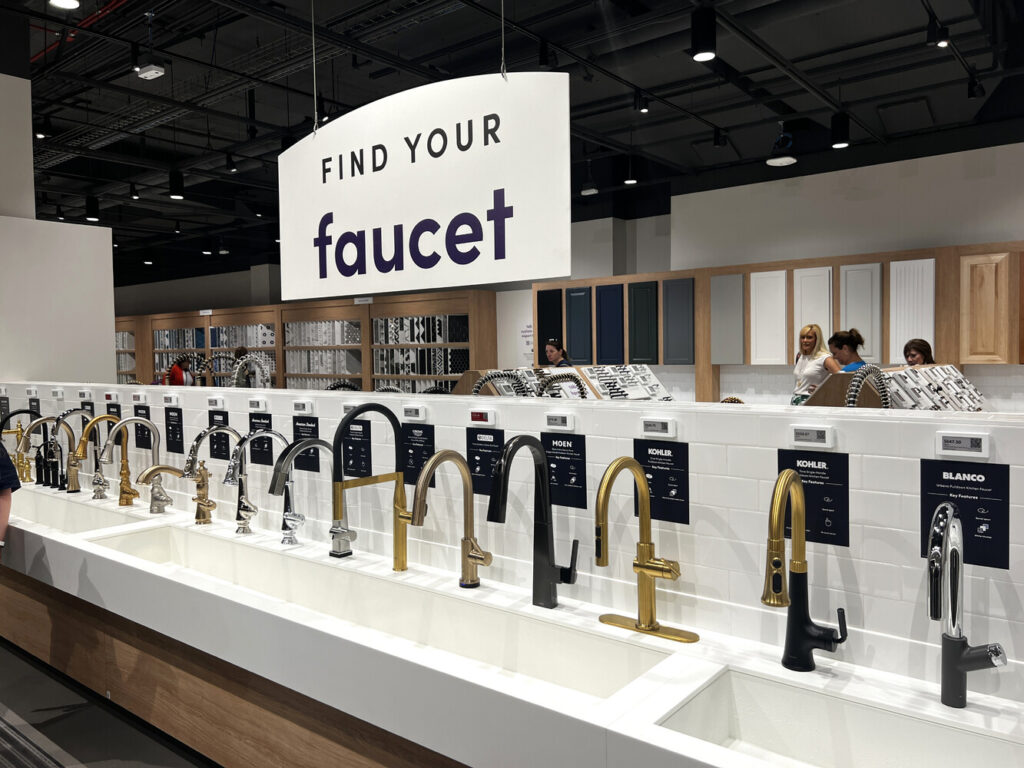
Photo ©Gregory Ng
A new way to comparison shop
One of the features I am excited about is how Wayfair chose to encourage comparison shopping with categories of items that truly demand more than just a comparison grid of features on a website.
In the section for kitchen faucets, not only can you see all of the faucets side-by-side you can also turn the faucets on! This may seem like a small detail. But anyone that has purchased a faucet before knows how important small details are in making a choice. I have seen other retailers feature faucets installed in a display so you could feel the way the handle feels in your hand, the hand movement needed to turn it on or the way the different metal materials feel on your skin.
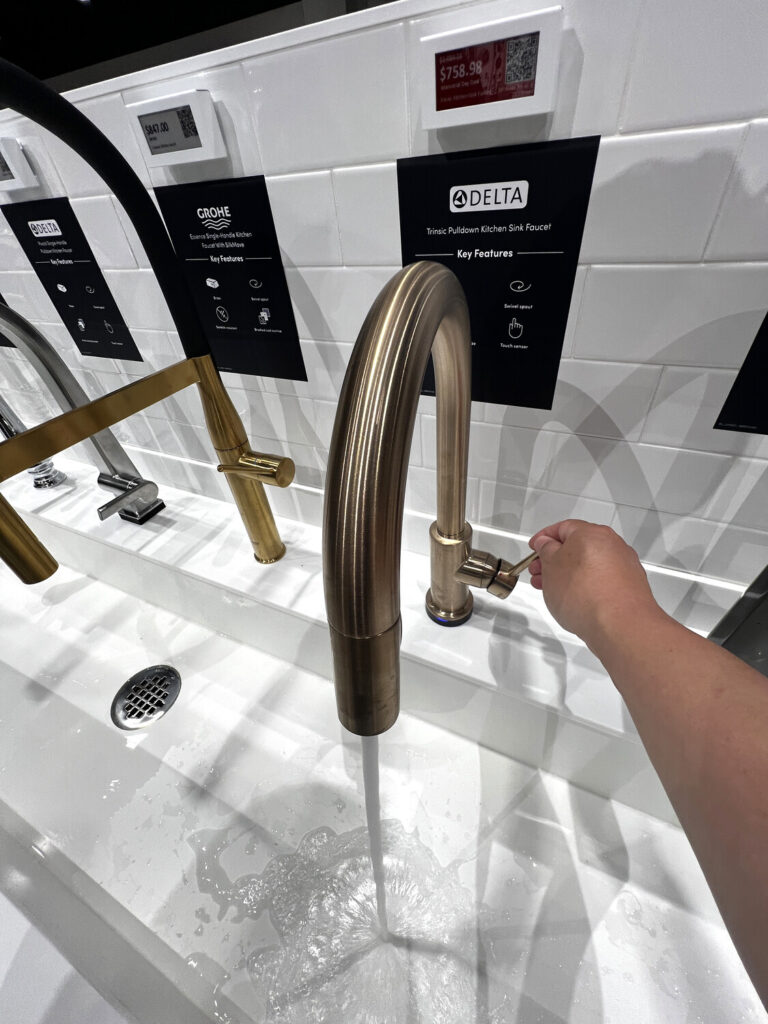
But something as simple as hooking them all up to a water supply gives you an understanding of how the water pressure feels, the differences of jetstream between models, as well as the sound they make.
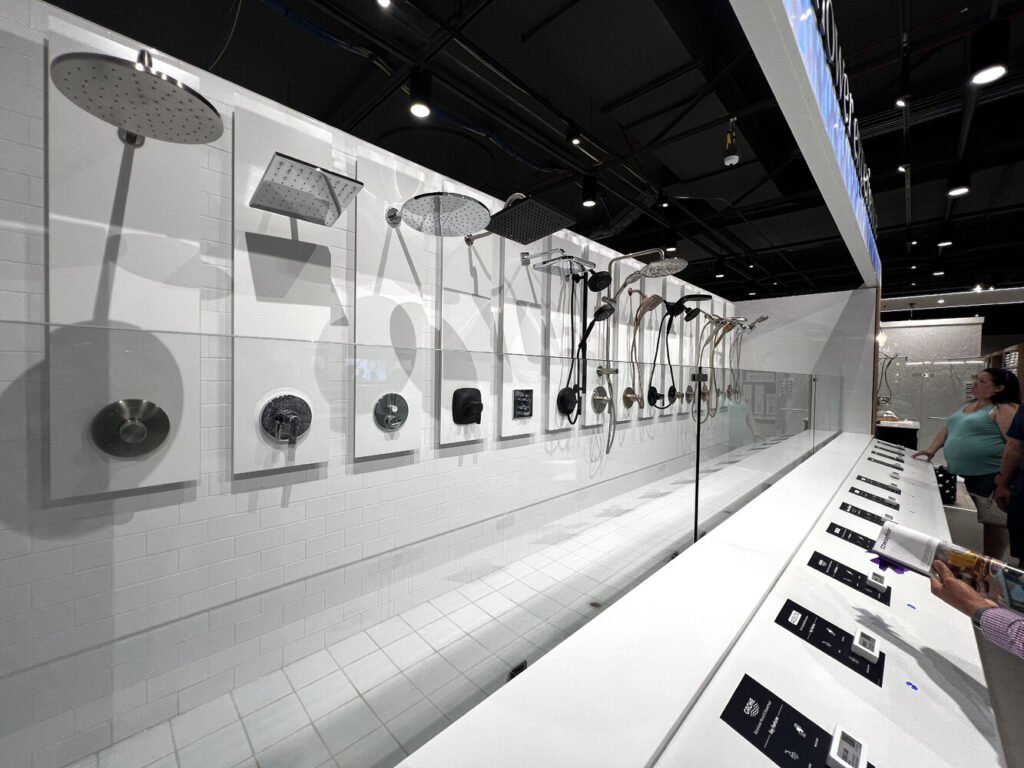
Wayfair also displays shower heads the same way— enabling you to push display buttons to turn them on and allowing you see and hear the differences between shower heads.
People are used to seeing products side-by-side before. If you’ve ever purchased a television in person, one of the major things that you can see with a full wall of TV models showing the same content side-by-side is the small differences between them. But this is the first time that I have seen this with faucets and shower heads.
Sadly, they did not offer the same feature with the toilets. I told an associate at the toilets section that it is a shame because “I’d like to try before I buy.” He chuckled in that “be friendly to your customer” tone that he must have been taught in training mixed with a hint of an eye roll familiar to me when I tell a dad joke to my kids.
This commitment to help customers make high consideration purchases is incredibly important.
A $150 kitchen faucet may be way cheaper than other purchases like sofas, appliances, and cars, but it is an item that people use multiple times a day. These minor differences between models are not apparent when using an online comparison grid or reading user reviews. What may be an amazing faucet for me may not be as appealing to my neighbor. That is not wrong or right—but it is important.
This display built into the Wayfair in-store experience will no doubt leave an impression for the visitors this morning. If there was a Wayfair store near me, I know that I would be more inclined to test out the different faucets side-by-side at a Wayfair store the next time I’m in the market for a faucet. And I would probably purchase from that Wayfair store as a result.
No matter how good an augmented reality experience or video content is, there are things that simply cannot be replicated in digital experiences. This is evidence that Wayfair thought about this and I bet it will yield great results.
How are buyers testing out the faucets? Which are being compared to each other? Does the importance of order of faucets along the line matter? Will the order in which the faucets are displayed be changed in the future to influence future purchasing decisions? And will these decisions be the same or different from those comparison shopping online? I am very interested to see what additional data is gathered by Wayfair because of this experience.
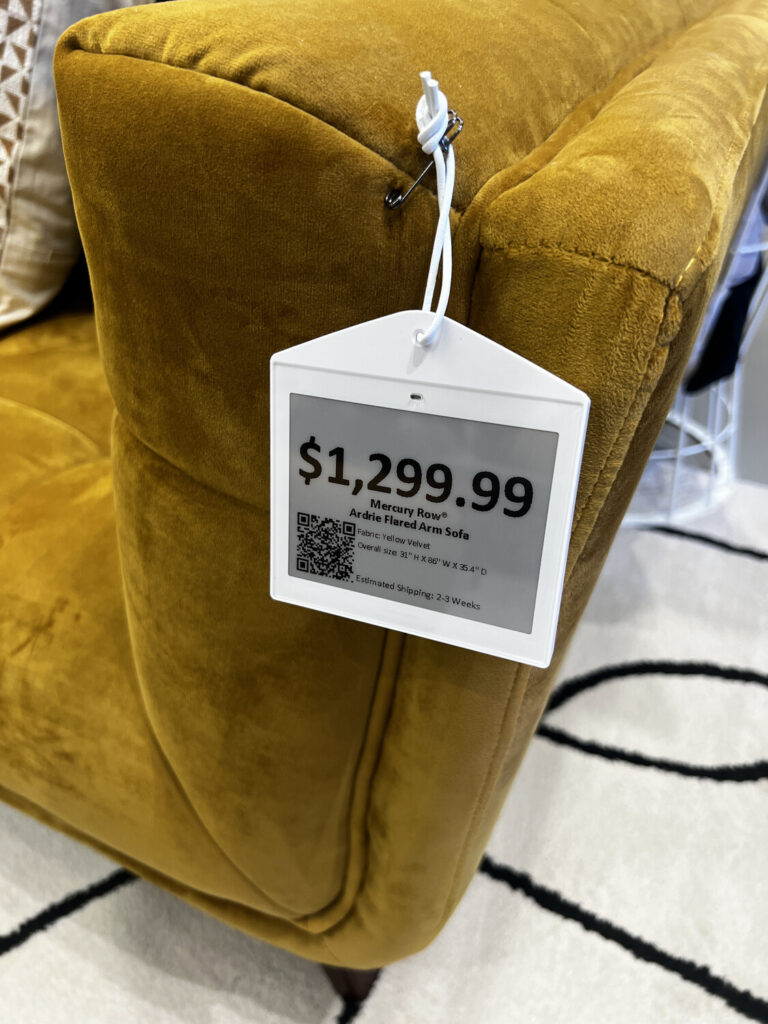
Digital Price Tags
The most important and exciting feature I experienced when visiting the Wayfair store this morning is in the way in which they display their pricing. Each item is outfitted with a digital price tag. I confirmed with an employee that these digital price tags are connected to their online store. This means that when a price changes on an item online, the physical store price tag changes immediately to match the price.
This is not only a great use of technology to create real time pricing consistency, it is also a great opportunity to capture more data about how current and future Wayfair customers are browsing in store.
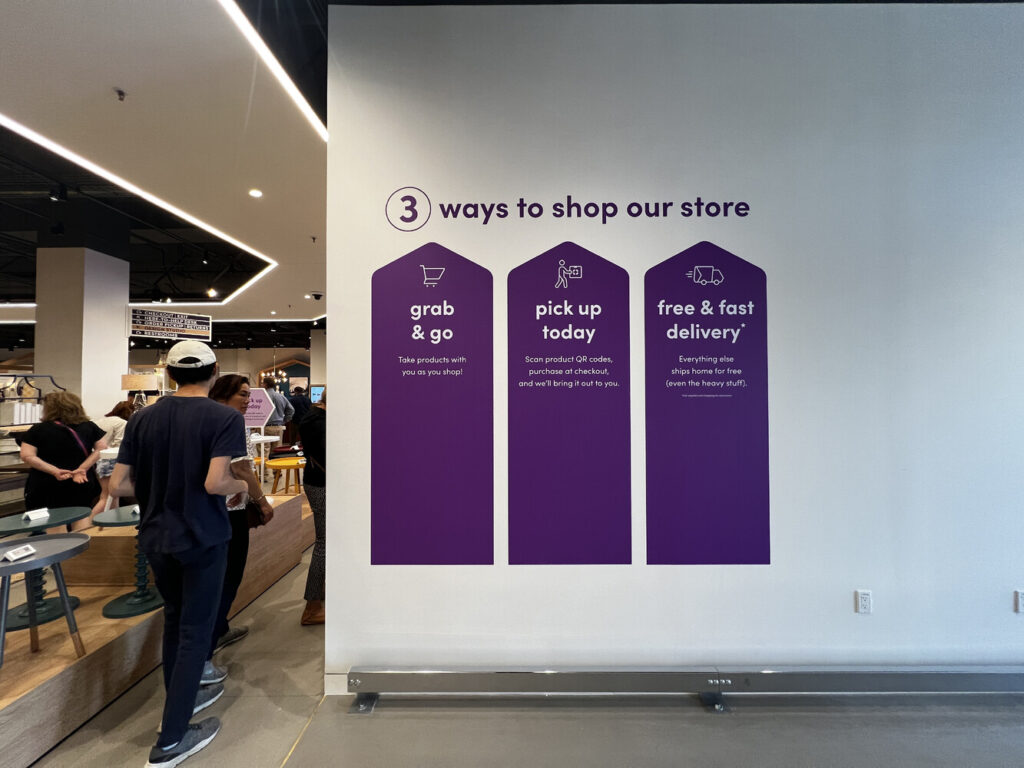
When you first walk into the store, there is a sign that explains the three ways that you can shop at that physical location: you can grab and grow using a shopping cart or bag, scan the product code on the price tags and get it brought out to you, and/or get items shipped to you for FREE.
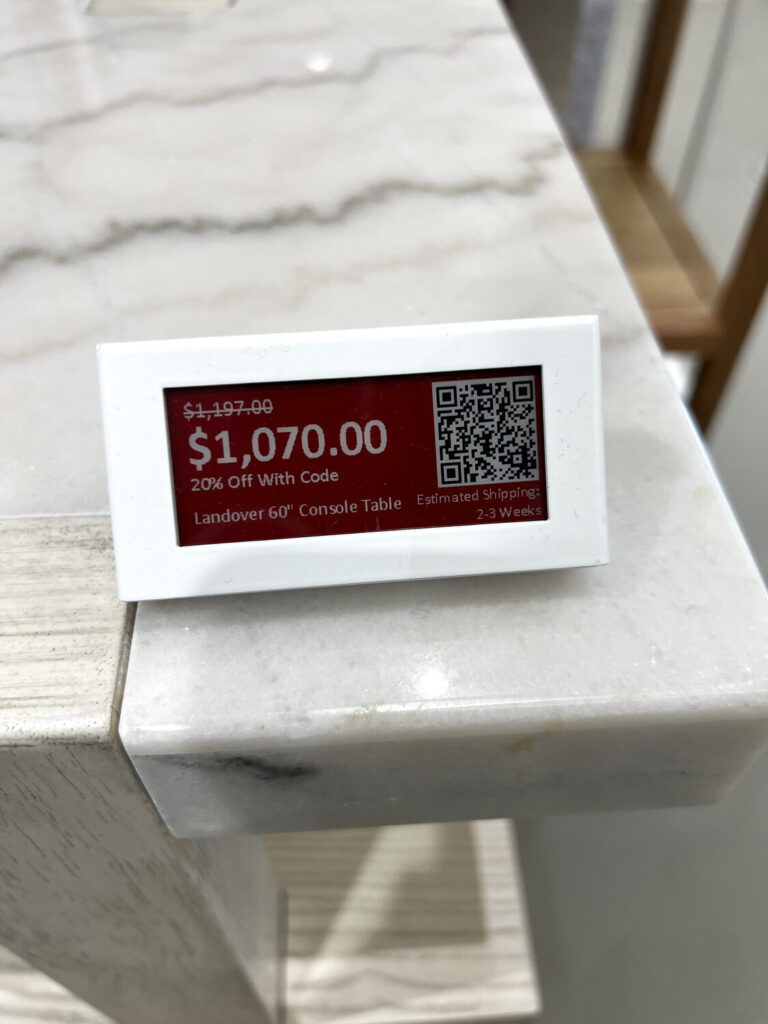
Outfitting each item with a digital price tag presents a number of advantages operationally and strategically. There is a QR code established for each item. When scanned, it pulls the item up in your Wayfair app. This QR code cannot only identify the items that you are interested in, it inevitably will track if you purchased it, when you purchased it, and whether you purchased at the end of your in-store shopping experience or perhaps later through the app or online.
I am very interested to see if, in the future, the price tags can serve as beacons to track your walking path throughout the store. This data can influence the way in which certain product categories can be highlighted and help optimize the store layout.
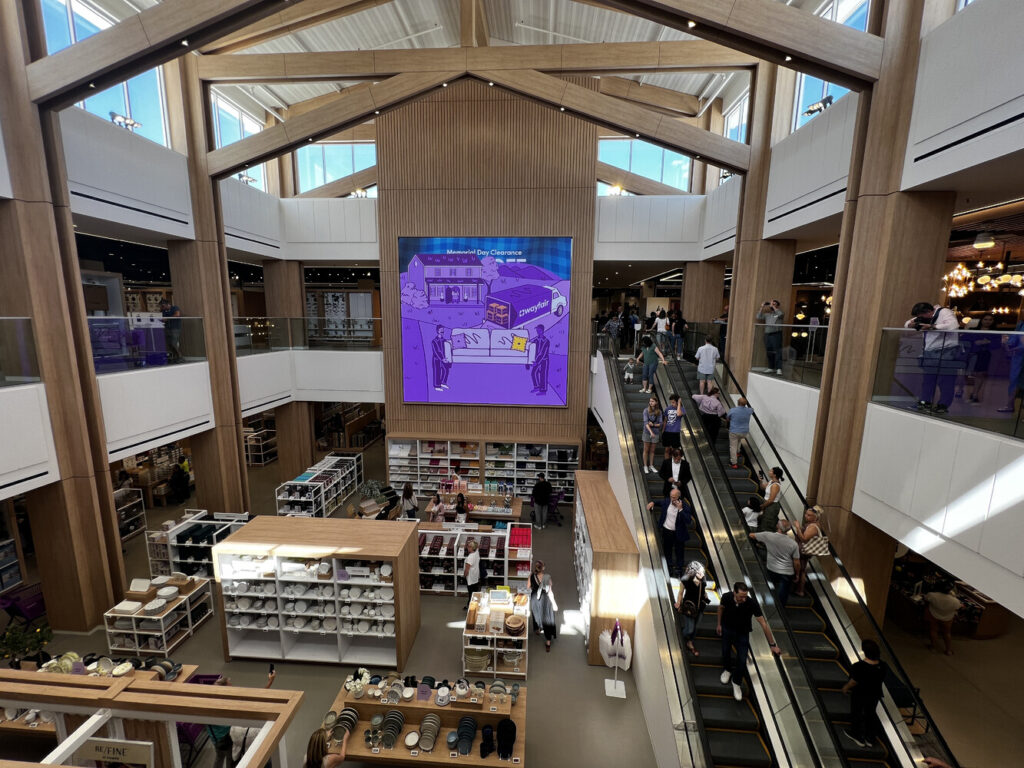
So, the big question: Has Wayfair Solved Omnichannel?
I loved seeing the various examples of how Wayfair is creating an in-store experience that is symbiotic with the digital one. Many retailers struggle to integrate the offline experience with the online one. In some cases, even though it is the same exact customer with the same credit card, retailers still struggle to understand the behaviors of that same customer across all channels. This understanding can strengthen their relationship with their customers.
I am very excited to see how successful this in store experience is for Wayfair, and I am also excited to see other retailers, consider innovating their existing brick and mortar footprint to more closely integrate their app and e-commerce channels to their brick and mortar retail experience.
Has Wayfair solved omnichannel? I am unsure omnichannel is anything that can ever be “solved.” The features of this new Wayfair store certainly aspires to create a more seamless buying experience between online and in-store. But to truly solve omnichannel, retailers must have the internal culture to move at the pace of change in customer expectation.
Today’s experience was a great one. Tomorrow’s experience has the risk of being less good. Now let’s see how Wayfair uses these experiences they are creating to remain agile to respond to the future needs.

Insights are key.
Recent Insights
Let's do
something epic.
At Blazer, we partner with ambitious brands and leaders that refuse to settle for less.
Get Our Updates
Blazer is the consulting firm that helps brands prove what drives customer value, and builds teams that deliver on it.
16 W. Martin St., 9th Floor, Raleigh, NC 27601
16 W. Martin St., 9th Floor, Raleigh, NC 27601
